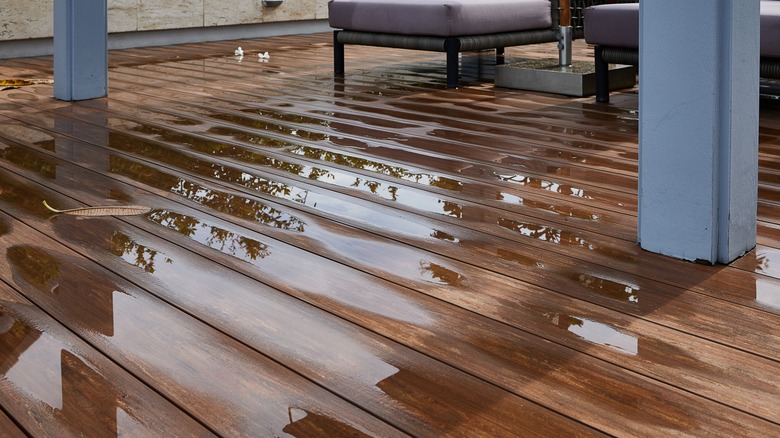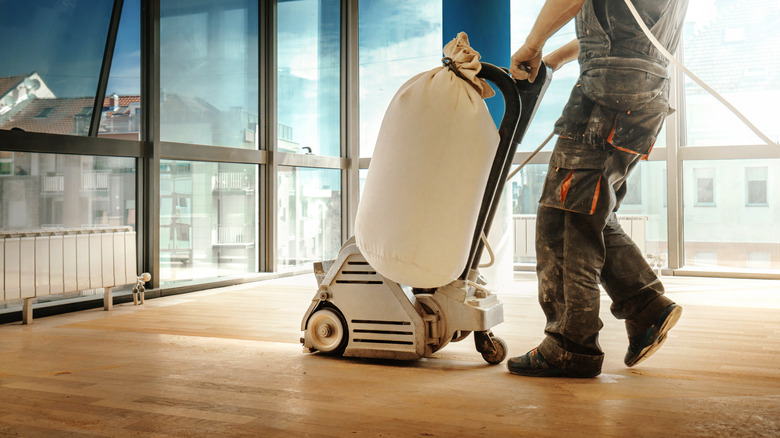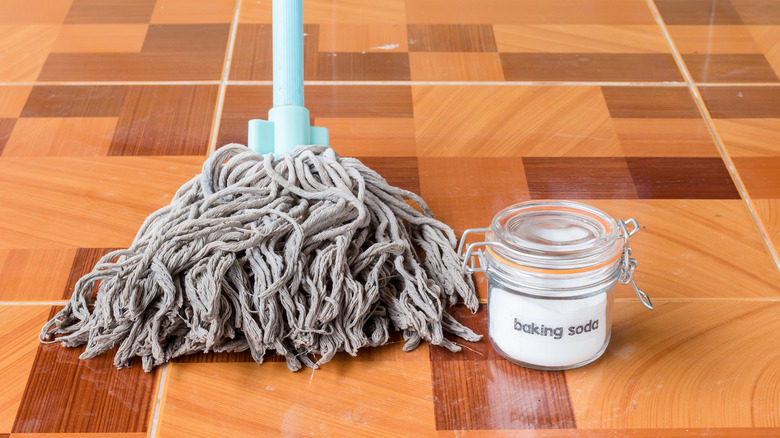Water Damaged Wood Floors? Steps To Bring It Back To Life
Every square foot of your hardwood floor is a testament to the compelling mix of resilience and glamour. Infusing practicality with their hypoallergenic nature and amplifying your home's allure with exquisite charm, hardwood floors seem invincible. Yet, set against the insidious power of water, they suffer a daunting challenge. The cellulose fibers gulp down water yet cling onto it longer, causing unsettling expansions. So, how long will it take for water to damage wood floors? The silent clock starts ticking the moment your hardwood floor meets water. And alarming as it may sound, mold and mildew could stage a dark parade as soon as 24 hours after floor-water contact. The critical window to react narrows down further in the face of powerful deluges, leaks, or burst pipes.
But then, will the wet wood floor go back to normal? While regaining the lost grandeur might seem far-fetched, it's achievable with prompt issue identification and resolution. So, how do you fix water-damaged wood flooring? A tactical advance through several stages, including vacuuming surface water and sanding, can help save your water-damaged wood floor. Signs of water damage on hardwood floors include warped or discolored planks, lifting boards, sprouting mold, and unsettled nails. As for water damage hardwood floor repair cost, it can run between $8 and an eye-watering $100 per square foot, hinging predominantly on the gravity of the damage. With that in mind, don't underestimate the power of early intervention, for your floor's and wallet's well-being are at stake here.
How to fix water-damaged wood floor
The first step in the epic confrontation against a waterlogged nemesis starts with assembling your weapons of war: a shop vac, stiff brush, squeegees, robust fans, an approved disinfectant, trusty rubber gloves, and an absorbent cloth. Clear the battlefield by shifting any furniture and carpets out of the way. If Mother Nature is on your side with a bright, sunny day, let these items soak some rays; otherwise, shelter them in a dry area. Couple the prowess of a squeegee and shop vac on a wet mode to remove surface water.
Next, dip your brush with a potion of mild detergent, suitable disinfectant, and water concocted in a bucket, then launch a scrubbing spree to remove dirt, organic material, and mud. For those mold patches? Deconstruct them with a blend of water mixed with formidable trisodium phosphate, after which you mop the floor with an absorbent cloth. Opening the windows and setting your fans on maximum setting, complemented by a dehumidifier in full throttle, will expedite drying. But what if water left its mark in the form of cupping or crowning? A drum or orbital sander should help with minor irregularities. For severe deformities, though, surrender to the inevitability of face-nailing the rebellious floorboards. Refurnishing is your shield if mold lurks beneath your wooden floor's paint. Here, use your scraper to strip the old paint, show no mercy with the TSP-water mixture onslaught, dry in the prescribed manner, and then apply stain and finish.
Precautions for fixing water damage on wood floors
Appropriate armor should suffice in this meticulous mission of bringing your hardwood floor back to life after water damage. So, suit up in protective gear, including rubber boots, gloves, and a mask. After all, collision with mold spores isn't a skirmish you aim to experience bare-faced and raw-handed. If a mild detergent or disinfectant ducks the fight, white vinegar diplomatically mixed with water or a sprinkle of baking soda can do the trick. As for moldy sections, staging a coup d'état with borax or hydrogen peroxide can be a winning strategy when trisodium phosphate is off the battlefield.
Despite the lure of hastened drying, direct heat will only crack your hardwood floor's resilience under the unforgiving temperature. Stick to air-drying instead. However, use only fans and dehumidifiers if the air outside is swelling with humidity and opening windows isn't an option. Sanding your floor should only unfold when the stage — your floor — is dry. Remember, ill-considered, uneven sanding could turn the restored floor into a checkerboard of irregular surfaces. Moderation befits scrubbing, as adding excess water raises a toast to further floor damage. Eventually, if the battleground morphs into an intricate maze of stubborn mold growth or badly cupped, crowned, or warped boards, there's no shame in drafting in the experts. Sometimes, acknowledging the need for professional intervention doesn't undermine the brave soldier in you; it simply emphasizes your commitment to saving your hardwood floor from damage.


